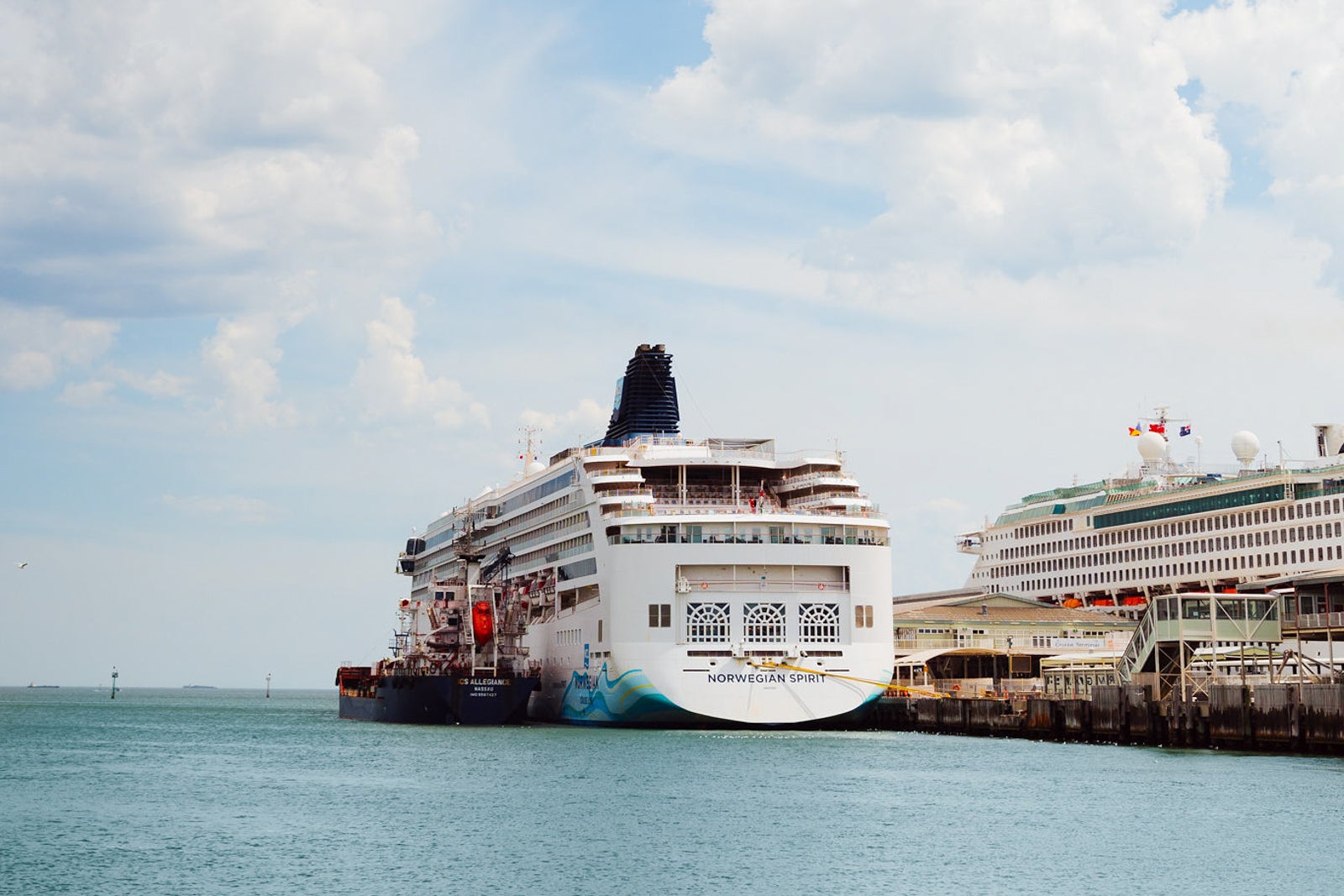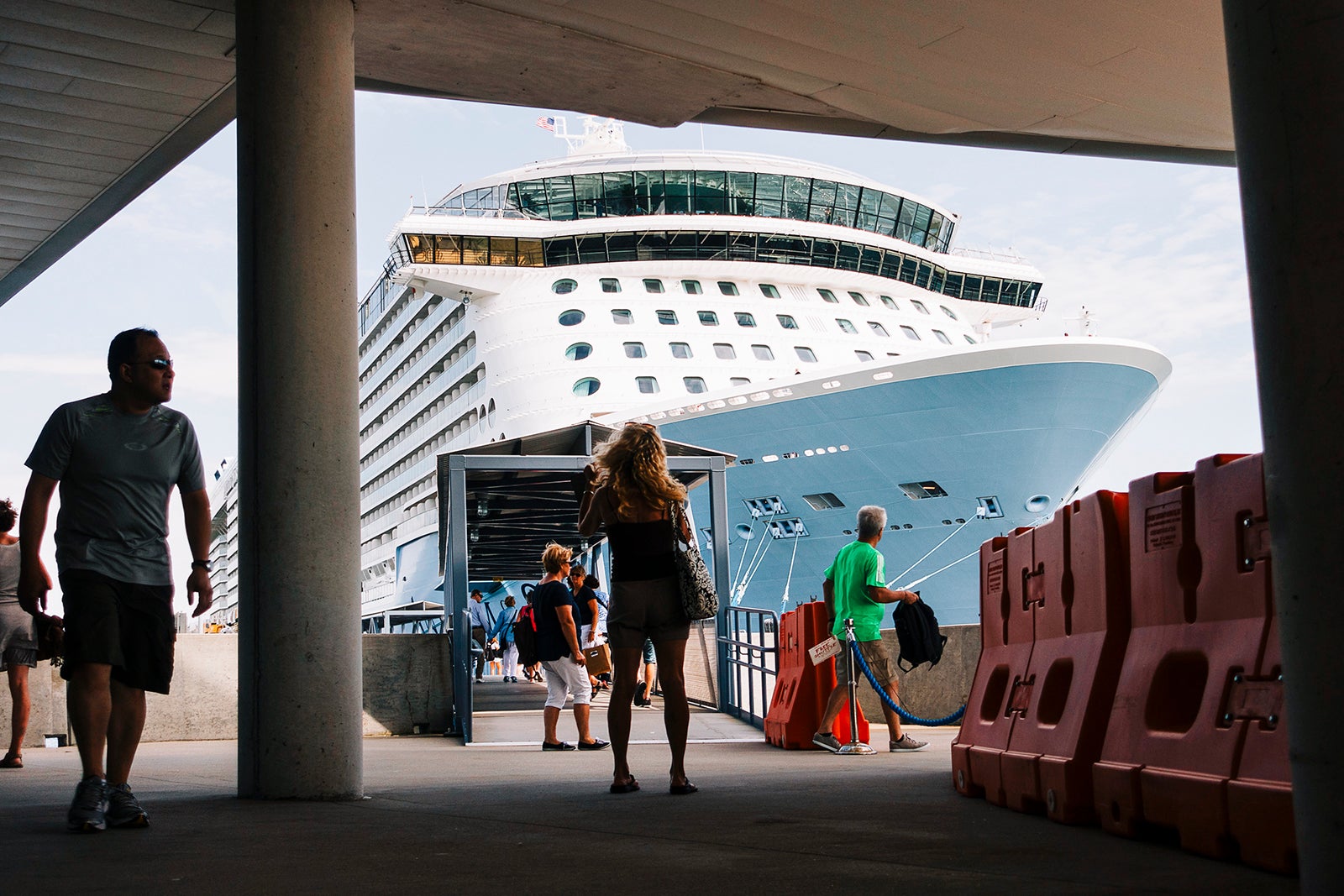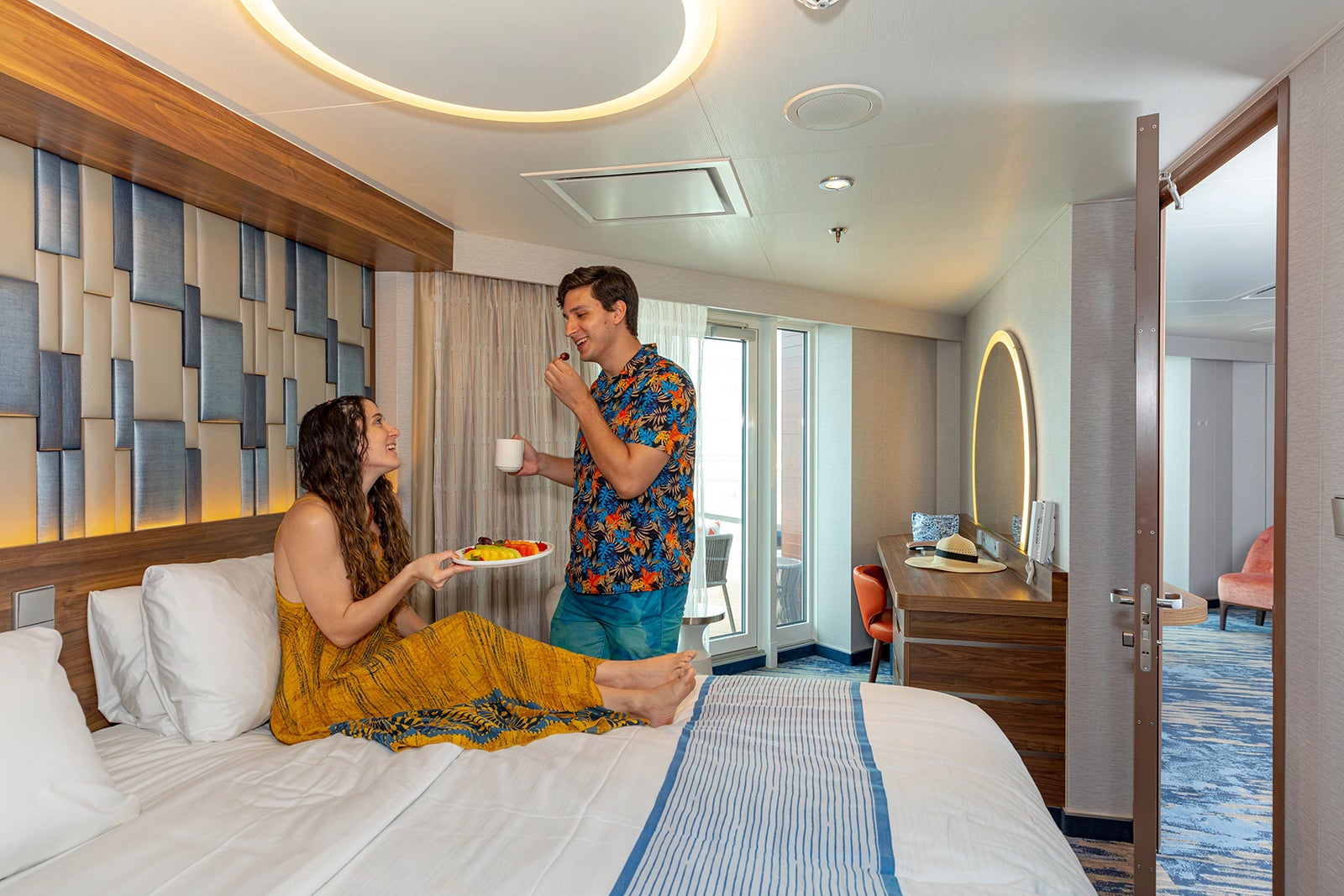Sometimes, a seven-night cruise just isn’t long enough. If you need more than a week at sea, consider booking a back-to-back cruise. It can be an efficient strategy to get more vacation for less money. You can turn a weeklong getaway into one lasting two or three weeks (or more). Simply research the itineraries offered by cruise lines to find which successive itineraries are of interest to you and are available to book.
If an extended cruise vacation sounds ideal, keep reading. Here’s what you need to know about booking back-to-back cruises.
For more cruise news, guides and tips, sign up for TPG’s cruise newsletter.
What are back-to-back cruises?
Quite simply, back-to-back cruises (also known as B2B among those who frequently book them) are consecutive itineraries sailed on the same ship. These are often nonrepeating itineraries — such as Eastern Caribbean followed by Western Caribbean. However, if you like to enjoy a ship like it’s a resort and prefer pool time over going ashore, you likely won’t mind repeating ports.
Related: Eastern Caribbean vs. Western Caribbean cruises: Which itinerary will I like more?
How can a back-to-back cruise save money?
You might spend more money on a longer vacation. However, back-to-back cruises can provide cost savings beyond the fare price.
For example, you’ll pay for just one airfare while enjoying two or more cruises to different ports of call. The savings on international flights can be significant, too.
You might also find one of the sailings is priced lower because the itinerary isn’t as in demand or a specific cabin category is offered at a discount. Some cruise lines even package several one-week sailings into a longer itinerary at a discounted price.
Additionally, you might find that when you book back-to-back cruises, some cruise lines offer onboard credit that you can use for shore excursions or spa treatments.

Daily Newsletter
Reward your inbox with the TPG Daily newsletter
Join over 700,000 readers for breaking news, in-depth guides and exclusive deals from TPG’s experts
Do all back-to-back cruises leave from the same port?
No. Some, but not all, back-to-back cruises are closed-loop (round-trip) itineraries. That means the ship returns to the same port it sailed from, such as a Caribbean cruise that begins and ends in Miami or a Mediterranean voyage that sails round-trip from Barcelona. Others are open-jaw (one-way) itineraries. On these sailings, a ship departs from one port and disembarks passengers in an entirely different port, such as Athens, Greece-to-Rome or Rome-to-Barcelona cruises.
Most cruise lines offer both types of itineraries. This gives you the option of booking two round-trip sailings from the same port, a round-trip sailing followed by an open-jaw sailing to a different port, back-to-back open-jaw sailings to and from the same two ports or two open-jaw itineraries that never revisit the same ports. It might sound confusing, but it’s actually fairly simple.
Here are a few examples of back-to-back itineraries.
Closed-loop back-to-back
You can book back-to-back round-trip sailings from Miami on the same ship that calls on one set of islands the first week — let’s say Eastern Caribbean favorites such as St. Thomas, St. Maarten and San Juan, Puerto Rico — and then visit Jamaica, Grand Cayman and Cozumel, Mexico, in the Western Caribbean the following week.
Related: Caribbean cruise guide: Best itineraries, planning tips and things to do
One-way back-to-back
In the Mediterranean, the largest ships operated by Royal Caribbean, Celebrity Cruises, Norwegian Cruise Line, Princess Cruises and other mainstream cruise lines often sail one-way between certain ports with cruise terminals that can accommodate the embarkation and disembarkation of thousands of passengers. This means you will see a Rome-to-Barcelona itinerary followed by a Barcelona-to-Rome itinerary. If these back-to-back sailings call on different ports (and they often do, perhaps with one or two repeats), you can book both cruises and see more of the Mediterranean in one trip.
Related: Mediterranean cruise guide: Best itineraries, planning tips and things to do
Open-jaw back-to-back
Another option is to book two back-to-back open-jaw itineraries that never visit the same ports. This is more common among premium and luxury cruise lines such as Oceania Cruises, Azamara, Crystal, Regent Seven Seas Cruises, Seabourn, Silversea Cruises and Viking. For example, you might book a seven-night sailing from Athens to Istanbul that explores the Greek islands, followed by a seven-night sailing from Istanbul to Venice, Italy, along Croatia’s Adriatic coast.
Round-trip and open-jaw
If you book the last Alaska cruise of the season in September, round-trip from Vancouver, British Columbia, you can often book the subsequent open-jaw Pacific Coastal sailing from Vancouver to Los Angeles.
What you cannot do is book back-to-back open-jaw sailings that leave from one U.S. port for the first sailing and end in another U.S. port for the second sailing. For example, if your first cruise goes from Los Angeles to Vancouver, you cannot stay on board for the next cruise from Vancouver to the Alaska cruise ports of Seward or Whittier.
Why? All itineraries must comply with the Passenger Vessel Services Act. This federal law prohibits passengers on foreign-registered ships (which most cruise ships are) from embarking and disembarking passengers in different U.S. cities without having called on a “distant foreign” country in between. In this instance, distant foreign ports are any port not in North America, Central America, the Bermuda islands or the West Indies.
The law sees your back-to-back sailing as one cruise from Los Angeles to Seward (two U.S. ports) versus two distinct sailings. Thus, your cruise does not comply with the PVSA, even if each individual itinerary is in compliance.
Related: The best Alaska cruises for every type of traveler
How to find and book back-to-back cruises
Check your preferred cruise line’s website, and use the cruise finder tool to organize upcoming sailings by date. Then, select a specific ship to see its back-to-back itineraries. If both cruises are available, you can book both of them.
Once you make two separate bookings for your back-to-back cruises, contact the cruise line by phone before departure to link both bookings. If you are working with a travel agent, they will link the bookings. This will allow you to bypass the full embarkation process for your second cruise.
Some cruise lines make it fairly easy by marketing longer sailings, typically 14 or 21 days, that are actually two or three one-week round-trip sailings. You can tell by looking at the itinerary. If a ship on a 14-night sailing returns on day eight to the same port it left from, the longer sailing is actually a combination of two back-to-back seven-night cruises.
Holland America Line does this frequently in the Caribbean. Its Collector’s Voyages combine two or three back-to-back cruises at more economical fares than booking the cruises individually. Because these 14- to 21-night journeys combine nonrepeating itineraries, guests get to visit multiple Caribbean regions on their island hopping journey.
Will I pay the same price for each cruise?
Probably not. Cruise fares change frequently based on demand. Also, cruise lines might offer special deals and promotions for specific sailings they are trying to fill. That said, the price for the same cabin category shouldn’t be drastically different from week to week unless one of the sailings is almost fully booked, which means prices will be higher.
Do you have the time for a multiweek vacation? Before booking a specific itinerary, have a peek at the ship’s next (or even previous) cruise to see if any deals are available. You can often extend your vacation by doing back-to-back sailings.
Can I book the second cruise once I am already on board?
In some cases, you can — and often, you can get a great deal. If the subsequent cruise isn’t sold out, the staff members at the cruise booking desk can help you secure a cabin. However, it is highly unlikely to be the same cabin and maybe even not the same category you are already in. Inquire and book as early in the first cruise as possible since all cruise bookings need to be made at least 48 hours before embarkation.
Note that if you do have success, you’ll also need to make sure you can rebook your flights home for the later date (unless you live within driving distance from the port and both cruises are round-trip sailings).
Do I need to disembark and then re-embark?
Most of the time, yes. However, it’s not as complicated as you might imagine.
On turnaround days in a U.S. port, all passengers must be off the ship for it to be cleared for the next voyage. So, if the first cruise disembarks guests in a U.S. port after visiting the Caribbean, Mexico, Canada, Bermuda or any other foreign country, you will most likely have to disembark and clear customs before reboarding the ship. In limited instances, customs officials may instead come on board to clear those passengers who are doing back-to-back cruises.
Keep in mind that this isn’t a full embarkation process — your luggage can stay on board — and each cruise line has its own procedure for guests staying on board.
For example, on Carnival Cruise Line cruises, a guest services staff member will meet back-to-back-cruise guests on the morning of disembarkation and lead them off the ship to a customs official in the terminal. Guests are then guided back to the ship’s guest services desk to complete a new check-in for the second cruise.
Royal Caribbean calls back-to-back cruises “consecutive cruises.” On turnaround day, guests staying on will receive customs requirement details in their cabins, including information on how to exchange old keycards for new ones.
Princess calls anyone sailing on back-to-back cruises “guests in transit.” Before the end of the first cruise, the line gives them in-transit cards and invites them to an in-transit gathering to provide them with details about the transit process. On turnaround day, Princess staff members will lead the group of guests in transit off the ship to customs officers. As soon as the ship is cleared (meaning all guests have disembarked), staff members lead the guests back on board.
Even on Holland America‘s Collector’s Voyages in the Caribbean, an organized disembarkation and second check-in are required because the sailings originate and end in U.S. ports.
In general, back-to-back cruisers can expect to be the last to disembark from the first sailing and the first to embark on the second sailing.
Outside the U.S., requirements vary by port for back-to-back cruise passengers. Some ports do require all guests to disembark per local port and customs regulations. Your cruise line will provide details.
Will I get a new keycard?
Yes, keycards are issued for each cruise and marked with the ship’s name and sail date. Princess Cruises is the exception, as it uses the Medallion, a reprogrammable device passengers can wear as a necklace or bracelet.
Can I keep the same cabin or suite?
It’s possible. However, you must take care of that during the booking process by making sure the same cabin is available to book for both sailings. If that seems too daunting, you can use a travel agent or call the cruise line’s customer service number and work with a representative to secure the same cabin for both cruises. This way, the representative or agent can link both sailings, ensuring the easiest transition during the disembarkation and re-embarkation process.
If you are unable to secure the same cabin on your back-to-back cruises, you will have to pack your bags on the morning of disembarkation. In most cases, the ship’s guest services team or your cabin attendant will move your bags to your new room during turnaround day.
Are there additional perks to back-to-back cruises?
Yes, and they vary. Some cruise lines, such as Carnival, offer a voucher for a complimentary beverage to guests staying on for another sailing. Princess holds an onboard gathering during which free cocktails are served and spa specials are offered. Azamara gives guests who book back-to-back sailings an onboard credit, with the amount dependent on the length of the cruises booked.
What’s the difference between back-to-back and side-to-side cruises?
Side-to-side cruises entail disembarking one cruise and getting on a completely different ship the same day. For example, say you’ve spotted a really great deal on a three-night cruise to the Bahamas from Miami on Royal Caribbean, but you need a 10-night vacation to really unwind. You can search for a seven-night sailing that departs from Miami (or nearby Port Everglades in Fort Lauderdale) the same day you disembark — on an entirely different ship. It doesn’t even have to be a Royal Caribbean vessel.
Bottom line
If your vacation happy place is at sea, back-to-back cruises are a great way to extend your enjoyment, visit twice as many ports and have ample time to enjoy all aspects of a ship. Booking back-to-back sailings requires a little online research of available itineraries. You can also call your cruise line’s customer service team for assistance in research and booking. You’ll soon be ready to set sail, relax and explore.
Planning a cruise? Start with these stories:





